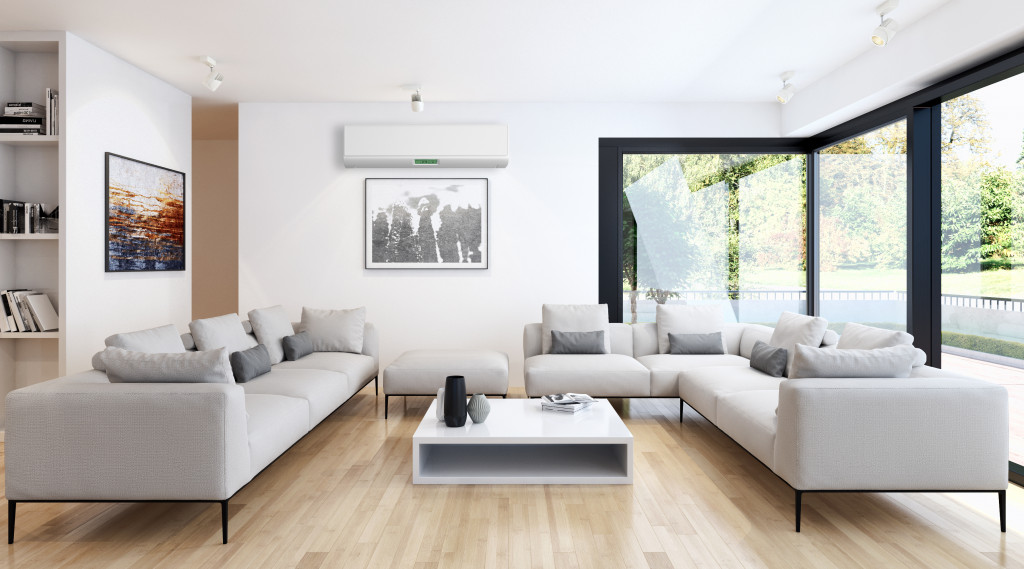A majority of people suffered from some form of cabin fever during the time we spent indoors for lockdown protocols. Industries across the board were affected from tourism, food, hospitality, banking, education, and even IT. All companies, big and small, had to adjust to continue serving consumers. A big part of this adjustment was transitioning a large chunk of your workforce to remote work setups. Virtual meetings became the new normal for day-to-day operations and even strategic planning meetings to prioritize your worker’s safety. Schools also transitioned to online learning platforms that attempted to replicate the classroom setup, especially for the younger generation.
Spending more time at home also meant tailoring our homes to our new needs. Dual-purpose spaces and adding innovative ways to make use of the rooms available to us were crucial. Our homes were no longer just a space for winding down and decompressing. They also started to serve as pseudo-offices, classrooms, theaters, coffee shops, and restaurants. Managing more people in the home also led to allocated spaces that fit in with everybody’s schedules. Safety concerns for shared spaces in the home also became a topic of concern as young children were spending more time at home unsupervised as parents worked from home.
There has been a wide array of changes to the home improvement industry and the real estate market. Understanding these changes can help companies pivot business models to anticipate them and better cater to the market’s demands. Though we’re currently still seeing the effects of the pandemic unfold, it’s safe to say that things aren’t going to look like what they used to be. These changes are sure to evolve more over time, but it seems like they’re here to stay in one way or another.
Home offices
A majority of offices transitioned to remote work setups. Working from home allowed companies to prioritize employee safety while still continuing operations. Though in the beginning, this may have caused a learning curve and a drop in productivity as time goes on, we’re actually seeing that there are jobs that benefit from ditching the office setup. Skipping the morning commute and being able to work in our own spaces have shown positive results in various industries, which means that remote working won’t just be temporary for some companies. Home offices were some first spaces we established during the beginning of the pandemic.
Learning spaces
Online learning became the go-to for schools and colleges. Though institutions for higher education were already using online platforms to assist students to some extent, ultimately going over to digital still proved challenging. This was even harder for the younger generation. So much of learning for the younger generation is experienced in the classroom setting and tied to socialization. Being stuck at home turned parents into educators and previously relaxed spaces into learning spaces.

Dedicated areas for virtual classes were also one of the first trends we saw during the pandemic. Children would be using these spaces every day, using furniture and renovations to mimic the classroom setup became extremely popular. Organization for these spaces was also an area of concern. Adding a messy house to the stresses brought to families by the pandemic wasn’t an option. It was essential to have great storage options in these spaces.
Outdoor areas
Spending all of our time indoors for the better part of a year took its toll on many families. It’s not surprising that outside spaces became highly coveted during lockdowns. Properties with outdoor spaces saw people finding new uses to utilize the space better and spend more time outdoors in the fresh air without the anxiety brought to them by going out in public. Terraces, balconies, and patios were a lifeline for some people.
The ability to spend time outside in the comfort of your own home was invaluable. Renovations for outside spaces became more popular as the pandemic started to die down and the businesses started to open up again. Patio building services and other landscaping services were sought after as people wanted to make use of their previously ignored outdoor space.
Smart homes
Security during the pandemic also became a significant concern. This was because of the increased demand for child supervision and the home’s overall safety as we went through difficult times financially. Modern security systems that allowed you to monitor your home from the convenience of your phone or a tablet were crucial to multitasking during the day for some parents.
These systems allowed sensors not just for possible entry points but also for other rooms or doors in the house. Modern designs also included cameras that let users watch a live feed of their homes.

